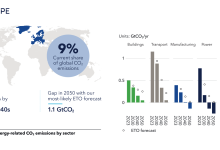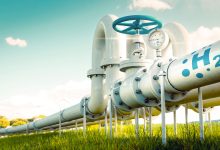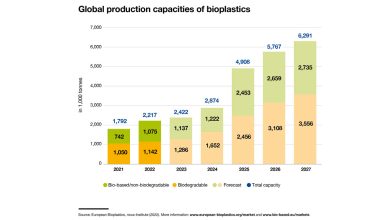Hydrogen in the EU’s Economic Recovery Plans
Following the European Commission’s publication on May 27, 2020 of an economic recovery plan for Europe to counter the crisis caused by COVID-19 and to restart the economy, Hydrogen Europe has prepared an overview of the announced support instruments and has analysed how it will impact the hydrogen and fuel cell industry.
The EU Recovery Plan consists of two instruments which add up to this first response: The Next Generation EU fund and a revised EU budget. Worth a total EUR 750 billion and EUR 1.100 billion respectively, both will compose the next Multiannual Financial Framework (MFF), or EU budget, for the period 2021-2027. This brings the total sum to EUR 1.85 trillion, and EUR 2.4 trillion if adding the short-term ‘safety nets’.
Hydrogen is featured as a key sector that should receive support under the recovery plans especially due to its ability to bolster the longer-term objectives of the European Union, such as the EU Green Deal’s targets, climate-neutrality, and the EU’s strategic autonomy. Hydrogen and the hydrogen sector are explicitly mentioned multiple times across the Commission’s set of Communications. Under the current plans put forward, it is set to feature prominently in several of the various schemes.
EU Recovery Instruments
Next Generation EU combined with the revised 2021-2027 MFF will give the Union a firepower worth up to EUR 1.8 trillion in order to rekindle the economy and achieve the Union’s priorities such as the Green Deal and the digital transition.
Next Generation EU is the European Recovery Instrument, it will be exceptional and temporary, and it addresses the most urgent challenges of the recovery.
Amounting to a total of EUR 750 billion, the funds will be raised on financial markets.
They will consist of grants and loans, which will be channelled through EU programmes. The funds foreseen under Next Generation EU should be consumed at an accelerated pace, by end of 2024.
As regards the EU budget, the 2021-2027 MFF is also reoriented to act as an essential tool for the European recovery. It will amount to EUR 1.100 billion and will be complemented by Next Generation EU and by the above mentioned ‘safety nets’.
Besides, the Commission proposes to upgrade the current MFF for the period 2014-2020, in order to make an extra EUR 11.5 billion available in funding for 2020, through REACT-EU, the Solvency Support Instrument and the European Fund for Sustainable Development.
The instrument articulates in three pillars. They respectively include the creation of new instruments, facilities, and programmes, as well as the reinforcement of pre-existing ones, all aimed at tackling the crisis and supporting the EU’s recovery.
Kick-starting a clean hydrogen economy
In the Communication presenting Next Generation EU, the Commission affirms the “recovery plan must guide and build a more sustainable, resilient and fairer Europe” and reasserts the need to steer forward “the twin green and digital transition”. In that regard, the Commission emphasized that the EU Green Deal should be the EU’s recovery strategy, whose policy fundamentals highlight the need for “kick-starting a clean hydrogen economy in Europe”.
Across the various funding programmes outlined under Next Generation EU, hydrogen industry could benefit from extra funding support, especially from a number of instruments such as:
- The Strategic Investment Facility;
- The Recovery and Resilience Facility;
- The reinforced Just Transition Fund, where hydrogen projects would be eligible.
Overall, and especially under the main recovery instrument – the Recovery and Resilience Facility – access to recovery funding is not strictly conditional to the achievement of Green Deal objectives by Member States. Yet, contribution of national recovery plans to green objectives will be part of a wider assessment framework and should follow a “do no harm” guiding principle, aiming to foster a green recovery and the emergence of adapted technologies.
The following instruments provide with most support potential for the hydrogen industry.
Strengthened InvestEU programme and the Strategic Investment Facility
Key facts
“InvestEU is the EU’s proposed flagship investment programme to kick-start the European economy”, building on the ‘Juncker Plan’ and the European Fund for Strategic Investments (EFSI). The Commission updates its 2018 original InvestEU proposal, it adds a fifth investment window (the ‘Strategic European Investment Window’ via the new Strategic Investment Facility) and updates the budget of the four others:
| InvestEU investment windows | New allocated budget |
| Sustainable Infrastructure | EUR 20 billion |
| Research, Innovation and Digitisation | EUR 10 billion |
| Small and Medium-Sized Companies | EUR 10 billion |
| Social Investment and Skills | EUR 3.6 billion |
| Strategic European Investment (Strategic Investment Facility) | EUR 31 billion |
InvestEU will focus on economically viable projects addressing market failures and investment gaps that hamper growth and help to reach EU policy goals. Of the four original windows, ‘Sustainable Infrastructure’ gains the most from the revision as its budget is doubled. This window comprises financing for sustainable transport and energy, supply and processing of raw materials, and the deployment of innovative technologies contributing to EU green objectives. Among others, projects will support the development of renewable energy and of alternative and synthetic fuels from renewable/carbon-neutral sources, energy and transport infrastructure modernisation, transport fleet renewal for cleaner mobility, energy savings, CCU/S, decarbonisation of energy-intensive industries, etc.
The fifth and new window, via the Strategic Investment Facility, will focus on ‘Strategic European Investments’ by investing in key European value chains crucial for Europe’s future resilience and strategic autonomy, in the context of the green and digital transitions and in line with the Union’s strategic agenda and new Industrial Strategy for Europe. It will aim at making these value chains stronger by supporting activities in critical infrastructure and technologies. It will “both target specific projects (e.g. supporting large consortia or public-private partnerships aimed at developing a specific technology and building critical infrastructure) and provide diffused financing, for instance by supporting the emergence of whole ecosystems of entrepreneurs active in the targeted sectors”. Eligible companies should “have their registered office in a Member State and they should be active in the Union in the sense that they have substantial activities in terms of staff, manufacturing, research and development or other business activities in the Union”. The aim is to foster “production within the Union or under the control of European investors” and the “scaling-up and deployment of innovative technologies”.
Besides its five investment windows, the InvestEU Fund will also provide a crosscutting and dedicated scheme to finance just transition plans under the Just Transition Mechanism (JTM).
Value and type of funding
The InvestEU Fund will mobilise public and private investments through a guarantee (i.e. collateral) that will back the investment projects of implementing partners such as the European Investment Bank (EIB) Group and others and will increase their risk-bearing capacity. The fund will provide an EU budgetary guarantee of EUR 75 billion (up from EUR 38 billion), generated by a EUR 30.3-billion budget (up from EUR 15.2 billion). Combined with financial partner’s estimated resources, it will aim to stir total investment worth up to EUR 1 trillion (up from EUR 650 billion). The guarantee under InvestEU will have a 45% provisioning rate (up from 40%), meaning that 45% of the EU budgetary guarantee (EUR 34 billion) is set aside in case calls are made on the guarantee, such as in the event of a loan default. The Strategic European Investment Window will have a dedicated EU budgetary guarantee allocation of EUR 31.5 billion, generated by a EUR 15-billion EU budget (under InvestEU’s total budget). Combined with financial partner’s estimated resources, it will aim to stir a total investment worth up to EUR 150 billion in equity and loans.
It should be noted that InvestEU financing can be blended with grants from other EU programmes.
Implementation method and organisations involved
The InvestEU Fund is managed by the Commission with the support of financial partners for its delivery. An Advisory Board allows the Commission to consult the financial partners and Member States when preparing and designing new financial products, to follow market developments and to share information. Commission staff are responsible for verifying the consistency of the proposed operations with EU law and policies. Finally, an independent Investment Committee, composed of external experts, approves the use of the EU guarantee for financing and investment operations proposed by the implementing partners. As regards the implementing partners, “the EIB Group will implement 75% of the EU guarantee. Other implementing partners include national promotional banks and institutions, as well as international financial institutions such as the European Bank for Reconstruction and Development or the Council of Europe Development Bank.” Besides, “the InvestEU Fund will also feature a Member State compartment for each policy area, meaning that Member States may add to the EU guarantee’s provisioning by voluntarily channelling up to 5% of their Cohesion Policy Funds to these compartments. Like this, Member States will benefit from the EU guarantee and its high credit rating, giving national and regional investments more firepower.”
What’s in it for hydrogen?
“The new Strategic Investment Facility will invest in technologies key for the clean energy transition, such as […] clean hydrogen,” announces the Commission.
Clean hydrogen, along with storage technologies, sustainable transport technologies and energy infrastructure, is repeatedly highlighted as a part of key strategic sectors: “Investment in key sectors and technologies, from 5G to artificial intelligence and from clean hydrogen to offshore renewable energy, holds the key to Europe’s future”. The strategic aspect of the facility is to be understood as European control (i.e. by producing in the EU or European ownership) of key value chains and industries (i.e. which the EU should secure for its strategic autonomy). The aim of the instrument is to support the value chains, meaning intervening at the different levels of the industry. This support opportunity is therefore expected to be comprehensive as regards industry player types across hydrogen production, distribution, and end-uses. As for other instruments, the EU Green Deal targets will also be the main support guideline. While the Commission acknowledges clean hydrogen’s “enormous potential to get Europe’s economy growing”, the sector’s capacity to contribute to green and strategic EU objectives comforts the industry’s chance to benefit from the Facility. Concretely, this instrument belongs to those under the EU Recovery Plan that offer most potential for hydrogen development.
The provided guarantee will enable participating stakeholders to profit from improved lending conditions to finance their projects. Support both via targeting specific projects (public-private partnership for key technology is mentioned) or via diffused financing for a targeted sector, are relevant and offer potential for the development of the whole hydrogen industry, across its various stakeholders and applications. In this regard, “the Clean Hydrogen Strategy and Alliance will steer and coordinate the rapid upscaling of clean hydrogen production and use in Europe,” plans the Commission.
The Strategic Investment Facility will bolster these initiatives further.
Besides the support potential offered by InvestEU’s fifth window, hydrogen will also benefit from other parts of the programme and its overall budget increase. Many eligible areas include applications of hydrogen and fuel cell technologies, especially under the first window on Sustainable Infrastructure; from transport (fleet renewal with clean vehicles, alternative fuels infrastructure deployment…) and energy (production of renewable energies and of alternative and clean synthetic fuels, infrastructure modernisation) to industry (decarbonisation of heavy industries) and agriculture (potentially hydrogen-based fertilisers). For example, InvestEU, via its Connecting Europe Facility, will “support the financing of the installation of one million charging points, clean fleet renewals by cities and companies, [and] sustainable transport infrastructure.”
The opportunities are large and apply broadly across the fuel cell and hydrogen value chain, such as hydrogen in mobility and heavy industries. The provided guarantee will enable participating stakeholders to benefit from bettered lending conditions to finance their projects.







